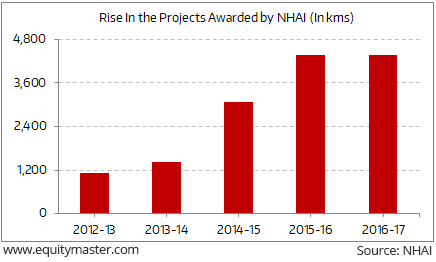After opening the day firm, stock markets in India maintained their tempo. Sectoral indices are trading on a positive note with stocks in the realty sector and oil & gas sector witnessing maximum buying interest.
The BSE Sensex is trading up 175 points (up 0.6%) and the NSE Nifty is trading up 49 points (up 0.5%). The BSE Mid Cap index is trading up by 0.7%, while the BSE Small Cap index is trading up by 0.9%. The rupee is trading at 63.97 to the US$.
Transport minister Nitin Gadkari said that the National Democratic Alliance (NDA) government is exploring a plan to raise Rs 10 trillion from retirees and provident fund beneficiaries for large infrastructure projects.
The plan aims to raise money in tranches of Rs 100 billion by selling 10-year bonds at a coupon of 7.25-7.75%. Each tranche will be meant for a specific project.
One shall note that the NDA is emphasizing on roads and highways projects lately. Their seriousness was evident in 2017-18 Union Budget’s massive Rs 910 billion allocation to road development.
The increased allocation has meant a significant uptick in road construction activity. From a mere nine km/day in 2014, road construction activity has surged to 22.5 km/day in the first quarter of this fiscal. This is evident from the chart below:
Government Has Set a Target of 15,000 kms in the Current Fiscal

The reasons contributing to this above uptick have been a change in the model on the basis of which road projects are now awarded.
As a recent edition of The 5 Minute WrapUp explains…
Because these projects require a huge amount of capital, the debt levels of many companies reached critical levels. To address the issue, the government introduced the ‘Hybrid Annuity Model’ (HAM). Under this model, the developer arranges 60% of the financing, with the balance 40% coming from the government. Further, the developer has no traffic risk, meaning low passenger traffic will not impact revenues. The icing on the cake is that the developer gets fixed payments from the government every year until the time it operates.
The developers preferred this model, and in FY17, around 56% of all government projects were HAM projects.











Leave A Comment